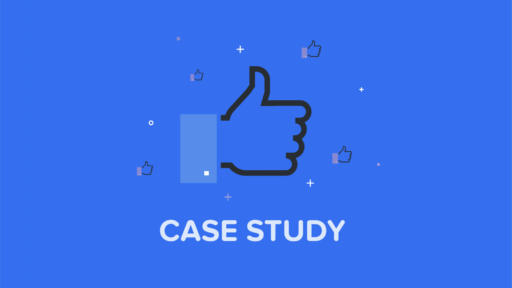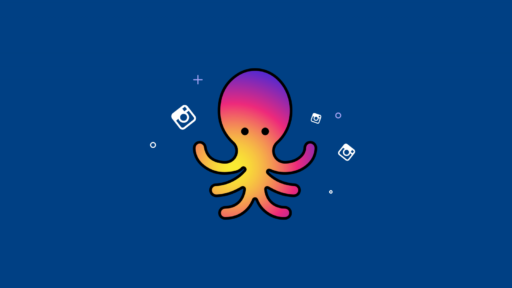Social media engagement used to mean spending hours crafting posts, responding to comments, and analysing what worked. AI has fundamentally changed that reality. Tools now understand your audience patterns, generate relevant content, and optimise posting schedules automatically. By 2025, 69% of marketers are leveraging AI to make content creation faster, more personalised, and scalable.
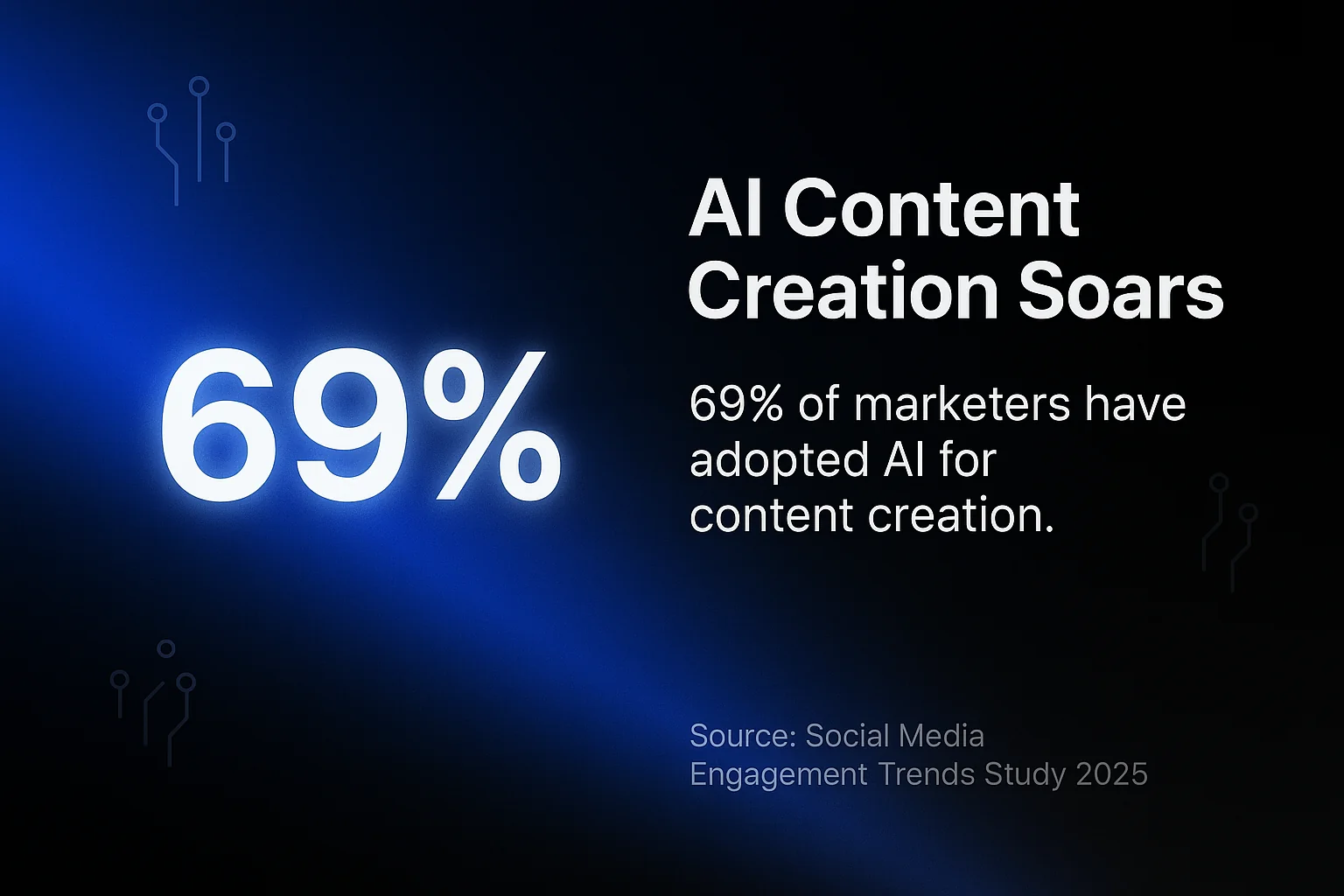
The practical impact goes beyond efficiency. AI analyses engagement signals across platforms to identify what resonates with your specific audience. It personalises content delivery based on individual preferences. It predicts optimal timing and formats before you invest creative resources.
This shift matters because social media success increasingly depends on consistency, personalisation, and speed. Manual approaches simply can’t match the scale modern platforms require. AI bridges that gap whilst maintaining the authentic voice your audience expects.
The following sections examine exactly how AI enhances specific aspects of social media engagement. We’ll explore content creation automation, scheduling optimisation, audience targeting, and analytics. Each area offers practical applications you can implement today.
Understanding AI-powered social media engagement
AI for social media marketing means using machine learning algorithms to automate, analyse, and optimise how you connect with audiences. These systems process massive datasets about user behaviour, content performance, and engagement patterns.
The technology operates through several interconnected capabilities. Natural language processing generates human-quality captions and posts. Computer vision analyses images to predict engagement potential. Predictive analytics forecasts which content types will perform best for specific audience segments.
AI adoption in social media now exceeds 1 billion monthly users globally. This widespread adoption reflects how essential these tools have become for maintaining competitive social media presence.
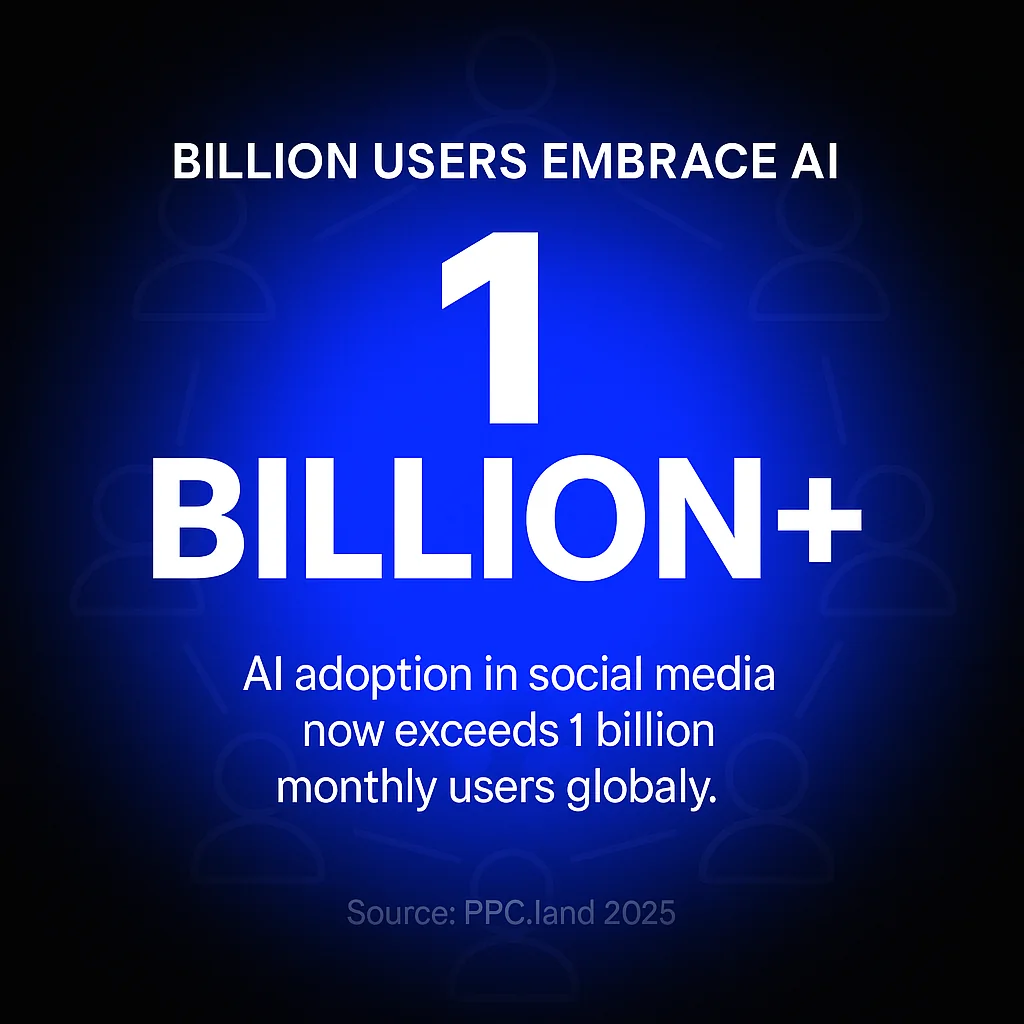
Core AI capabilities transforming engagement
AI-powered content generation creates platform-specific posts tailored to your brand voice. Feed these systems your existing content and brand guidelines, and they produce variations optimised for Instagram, LinkedIn, Facebook, or TikTok.
Sentiment analysis monitors how audiences respond emotionally to your content. This real-time feedback helps you adjust messaging before negative patterns escalate. It identifies which topics generate positive reactions worth amplifying.
Audience segmentation divides followers into groups based on behaviour patterns. AI identifies micro-segments you wouldn’t spot manually. Each segment receives content personalised to their interests and engagement history.
The engagement enhancement mechanism
AI enhances engagement through three primary mechanisms. First, it increases content volume without sacrificing quality. You can maintain consistent posting schedules across multiple platforms simultaneously.
Second, it improves relevance through personalisation. Content reaches users when they’re most likely to engage, in formats they prefer. This targeted approach generates higher interaction rates than broadcast-style posting.
Third, it enables rapid response capabilities. AI-powered chatbots handle routine enquiries instantly. Social listening tools alert you to conversations requiring human attention. This responsiveness builds stronger audience relationships.
AI tools reshaping social media marketing in 2025
The AI tools landscape has matured significantly. Platforms now offer specialised capabilities rather than generic automation. Understanding which tools address specific engagement challenges helps you build an effective technology stack.
The global social media advertising spend is projected to reach $277 billion in 2025. This investment reflects the commercial value of AI-enhanced engagement strategies.

Content creation and copywriting platforms
Jasper AI specialises in brand-consistent content generation. Train it on your existing content library and it produces posts matching your established voice. It handles Instagram captions, LinkedIn articles, and Twitter threads.
Copy.ai focuses on conversion-oriented social media copy. Its templates guide you through creating posts optimised for specific objectives like link clicks, sign-ups, or product awareness.
ChatGPT offers flexible content generation across platforms. Craft detailed prompts describing your audience, objectives, and brand voice. The system generates multiple variations you can refine and deploy.
Visual content and design automation
Canva’s AI features automate graphic design for social posts. Magic Design generates complete post layouts from text prompts. Background Remover isolates subjects instantly. The platform optimises dimensions for each social network automatically.
Adobe Firefly creates custom images from text descriptions. Generate unique visuals matching your campaign themes without stock photo libraries. The generative AI understands style requests like “minimalist tech aesthetic” or “vibrant lifestyle photography”.
Scheduling and automation platforms
Buffer uses AI to recommend optimal posting times based on your audience’s historical engagement patterns. It analyses when your followers are active and most likely to interact with content.
Hootsuite combines scheduling with AI-powered content recommendations. The platform suggests relevant content to share and predicts which posts will generate highest engagement before you publish.
Later provides visual planning alongside predictive analytics. Its Best Time to Post feature analyses your Instagram, TikTok, Facebook, and Twitter data to identify peak engagement windows.
Analytics and performance tracking tools
Sprout Social delivers AI-driven insights about content performance across networks. Its listening tools track brand mentions and sentiment. The platform identifies trending topics within your industry.
Brandwatch specialises in social listening at scale. It monitors millions of conversations to identify emerging trends, competitive threats, and opportunities for engagement.
Automating content creation with AI
Automated content creation transforms how marketing teams maintain consistent social media presence. The key lies in training AI systems on your brand guidelines whilst maintaining authentic human oversight.
Start by documenting your brand voice characteristics. Define tone, vocabulary preferences, topics to emphasise, and subjects to avoid. Feed these guidelines into your chosen AI platform alongside examples of well-performing past content.
Generating platform-specific content
Instagram requires visually-focused captions that complement imagery. AI tools analyse your best-performing Instagram posts to identify patterns in caption length, emoji usage, hashtag strategy, and call-to-action phrasing.
LinkedIn content demands professional tone and industry insights. AI platforms generate thought leadership posts, comment on industry trends, and craft engaging questions that spark professional discussions.
Facebook posts benefit from conversational tone and community-building language. AI systems create content that encourages comments, shares, and meaningful interactions rather than passive scrolling.
TikTok and Twitter demand brevity and cultural awareness. AI tools trained on trending content patterns generate timely, relevant posts that align with current platform culture whilst maintaining brand appropriateness.
Maintaining authenticity in automated content
The challenge with AI-generated content is preserving authentic brand personality. Implement a review workflow where human team members approve AI-generated posts before publication.
Create content templates for recurring post types. AI fills in variable elements like statistics, examples, or timely references. The core message structure remains consistently on-brand.
Use AI for initial drafts rather than final copy. Let the system generate multiple variations. Human editors select the strongest option and refine details that require nuanced judgement.
Scaling content production efficiently
AI enables content production at scales impossible manually. Generate month-long content calendars in hours. Create platform-specific variations of core messages simultaneously.
Set up content batching workflows. Dedicate specific time blocks to generating multiple weeks of social content. AI tools process these batches rapidly whilst you focus on strategic decisions.
Repurpose long-form content into social posts automatically. AI extracts key points from blog articles, reports, or videos. It reformats these insights as social media posts optimised for each platform.
Intelligent scheduling and posting automation
Posting timing significantly impacts engagement rates. AI-powered scheduling eliminates guesswork by analysing when your specific audience is most active and receptive to content.
Traditional scheduling tools let you select times manually. AI scheduling analyses years of engagement data across your accounts. It identifies patterns in when different content types perform best for your unique follower base.
Optimising post timing with predictive analytics
AI scheduling platforms examine dozens of variables affecting engagement. Day of week, time of day, content type, caption length, and visual style all influence performance differently for each audience.
These systems learn continuously from new data. Performance patterns evolve as your audience grows and platform algorithms change. AI adapts recommendations automatically without requiring manual analysis.
Implement platform-specific timing strategies. Optimal LinkedIn posting times differ dramatically from Instagram or TikTok. AI tools maintain separate schedules optimised for each network’s unique engagement patterns.
Queue management and content distribution
Create content queues organised by topic, campaign, or content type. AI systems distribute queued content at optimal times whilst maintaining appropriate posting frequency.
Set minimum and maximum daily posting limits. AI ensures consistent presence without overwhelming followers. It spaces posts to maximise individual content visibility.
Prioritise time-sensitive content automatically. AI identifies urgent posts requiring immediate publication. It adjusts standard queue timing to accommodate breaking news, product launches, or trending topics.
Multi-platform coordination strategies
Publishing identical content simultaneously across platforms wastes opportunities. AI tools customise messaging for each network whilst maintaining coordinated campaign themes.
Schedule complementary content that tells coherent stories across platforms. Instagram posts drive visual interest. Twitter threads provide detailed explanations. LinkedIn articles offer professional perspectives. AI coordinates these elements for maximum campaign impact.
Monitor cross-platform performance to identify which networks drive specific outcomes. AI analytics reveal where audiences discover content, where they engage deeply, and which platforms convert to desired actions.
Personalisation and audience targeting with AI
Generic content reaches everyone but resonates with no one. AI-powered personalisation segments audiences and tailors content to individual preferences at scale.
Machine learning algorithms analyse follower behaviour patterns. They identify which content types, topics, and formats specific audience segments prefer. This intelligence informs both content creation and distribution strategies.
Audience segmentation techniques
Demographic segmentation groups audiences by age, location, language, or professional background. AI enhances this with behavioural data showing actual engagement patterns rather than assumed preferences.
Interest-based segmentation identifies niche topics that captivate specific follower groups. AI discovers these micro-interests by analysing which posts generate disproportionate engagement from particular users.
Engagement level segmentation separates highly active followers from passive observers. Create distinct content strategies for each group. Reward engaged followers with exclusive content. Re-engage dormant followers with targeted campaigns.
Dynamic content adaptation
AI systems adjust content elements based on who’s viewing. Instagram’s algorithm already shows different post subsets to different users. AI tools help you create content variations that perform well across diverse audience segments.
Develop modular content frameworks. Core messages remain consistent whilst examples, imagery, and calls-to-action adapt to segment preferences. AI handles variable element selection for each publication.
Test content variations systematically. AI platforms run multivariate tests comparing different headlines, images, captions, and posting times. They identify winning combinations and apply learnings to future content.
Behaviour-triggered engagement
Set up automated responses triggered by specific user actions. When followers engage with particular content types, AI systems note their interests and adjust future content delivery accordingly.
Create welcome sequences for new followers. AI personalises these based on how they discovered your account and their initial engagement patterns. This targeted approach builds stronger connections from first contact.
Re-engagement campaigns target followers showing declining activity. AI identifies these users early and triggers content specifically designed to recapture their attention before they disengage completely.
Analytics and performance measurement
Understanding what works requires analysing engagement data systematically. AI analytics platforms process massive datasets to surface actionable insights human analysts would miss.
Move beyond vanity metrics like follower counts. AI tools reveal which content drives meaningful business outcomes. They connect social media activity to website traffic, lead generation, and sales.
Key engagement metrics to track
Engagement rate measures interactions relative to reach. AI platforms calculate this across different content types, topics, and posting times. They identify which variables consistently drive higher engagement.
Audience growth rate shows how quickly you’re attracting new followers. More importantly, AI analyses follower quality by examining engagement levels and relevance to your target audience.
Content performance metrics reveal which posts generate saves, shares, and meaningful conversations. AI systems identify patterns in high-performing content to inform future creation strategies.
Conversion tracking connects social activity to business outcomes. AI attribution models show which social touchpoints contribute to conversions throughout customer journeys.
Predictive analytics for content strategy
AI forecasting predicts how new content will perform before publication. These systems analyse historical data to estimate engagement potential for proposed posts.
Trend identification spots emerging topics within your industry. AI monitors social conversations to detect interest surges early. This intelligence lets you create relevant content whilst topics are gaining momentum.
Competitive analysis shows how your engagement compares to industry benchmarks. AI tools track competitor content strategies and performance. They identify gaps and opportunities in your approach.
Reporting and insight generation
Automated reporting saves hours of manual data compilation. AI platforms generate comprehensive performance reports showing trends, anomalies, and recommendations.
Natural language insights translate data into plain English explanations. Instead of interpreting charts, you receive clear statements like “Instagram Reels generated 3x more engagement than static posts last month”.
Actionable recommendations guide strategy adjustments. AI doesn’t just report what happened. It suggests specific changes to improve future performance based on identified patterns.
Increasing engagement through AI-powered interactions
Direct interaction builds community and loyalty. AI enables responsive engagement at scales impossible for human teams alone.
AI-powered social bots can increase engagement on posts by generating relevant comments, with posts receiving 23% more comments and 11% more likes. The key lies in maintaining authentic, helpful interactions that add genuine value.

Chatbot implementation for social platforms
Facebook Messenger bots handle common enquiries automatically. Set up conversational flows that answer frequently asked questions, provide product information, or guide users to relevant resources.
Instagram Story responses benefit from AI automation. When followers reply to Stories, chatbots can acknowledge responses, answer questions, or direct complex queries to human team members.
LinkedIn messaging automation helps manage connection requests and initial conversations. AI qualifies leads, schedules meetings, or provides information without manual intervention.
Comment management and response automation
AI comment moderation filters spam and inappropriate content automatically. It flags comments requiring urgent attention from human moderators. This keeps community spaces positive without constant manual monitoring.
Response suggestions help teams reply faster to common comment types. AI analyses incoming comments and recommends appropriate responses. Team members approve, edit, or send suggested replies instantly.
Sentiment-based prioritisation ensures you address negative feedback promptly. AI identifies upset customers and routes their comments to appropriate team members immediately.
Proactive engagement strategies
Social listening identifies conversations where your brand can add value. AI monitors relevant hashtags, keywords, and topics. It surfaces opportunities to join discussions authentically.
Influencer identification finds accounts whose audiences align with your target market. AI analyses follower demographics, engagement rates, and content relevance. It recommends partnership opportunities based on data rather than follower counts alone.
Community building automation welcomes new members, recognises active contributors, and celebrates community milestones. These personal touches strengthen relationships whilst requiring minimal manual effort.
Content optimisation for maximum reach
Creating content is half the battle. Optimising it for platform algorithms and search visibility multiplies its impact.
AI optimisation tools analyse what algorithms prioritise. They adjust content elements to improve visibility within platform feeds and search results.
Hashtag strategy and selection
Effective hashtag strategies balance reach and relevance. AI tools analyse hashtag performance data to identify options that expose content to target audiences without drowning in oversaturated tags.
Generate platform-specific hashtag sets. Instagram supports up to 30 hashtags. Twitter limits characters. LinkedIn favours fewer, more targeted tags. AI platforms recommend optimal quantities and specific tags for each network.
Track hashtag performance over time. AI identifies which tags consistently drive engagement versus those losing effectiveness. It suggests fresh alternatives as trends evolve.
Visual content optimisation
Image recognition AI analyses which visual elements drive engagement. It identifies patterns in colour schemes, composition styles, and subject matter that resonate with your audience.
Video optimisation ensures content meets platform specifications. AI tools automatically adjust aspect ratios, add captions, and optimise file sizes. They recommend video lengths based on platform-specific engagement patterns.
Thumbnail generation for video content uses AI to identify compelling frames. These systems understand which visual elements drive clicks and watch time.
Caption and copy optimisation
Caption length impacts engagement differently across platforms. AI analyses your historical data to determine ideal lengths for your specific audience on each network.
Readability optimisation ensures captions are accessible. AI tools flag complex language, suggest simpler alternatives, and verify appropriate reading levels for your target audience.
Call-to-action placement and phrasing affects response rates. AI tests different CTA approaches and identifies which phrases drive desired actions most effectively.
Managing social media campaigns with AI
Coordinated campaigns require managing multiple content pieces, channels, and timing elements simultaneously. AI campaign management tools orchestrate these complexities efficiently.
Campaign planning benefits from AI’s ability to model different scenarios. Test various content mixes, budgets, and timelines virtually before committing resources.
Campaign structure and coordination
Organise campaigns by objective, audience segment, or product line. AI platforms maintain separate tracking for each campaign whilst identifying opportunities for coordination.
Content calendars visualise entire campaigns across platforms and timeframes. AI identifies gaps in coverage, overlapping posts, or timing conflicts requiring adjustment.
Cross-platform synchronisation ensures cohesive messaging. AI coordinates content publication so campaigns unfold logically across different networks.
Budget allocation and optimisation
AI-powered budget management analyses which platforms and content types deliver best return on investment. It recommends spending adjustments based on performance data.
Dynamic budget reallocation shifts spending toward top performers automatically. When certain campaigns exceed expectations, AI suggests budget increases to maximise results.
Cost per engagement tracking reveals true campaign efficiency. AI calculates these metrics across platforms to enable meaningful performance comparisons.
A/B testing and iteration
Systematic testing identifies winning content approaches. AI platforms automate test setup, audience splitting, and results analysis.
Multivariate testing examines multiple variables simultaneously. Test headlines, images, posting times, and calls-to-action in combination. AI determines which element combinations drive optimal results.
Continuous optimisation applies learnings from completed tests to future campaigns. AI builds knowledge bases of what works for your specific brand and audience.
Integrating AI tools into existing workflows
Adopting AI requires thoughtful integration with current processes. Rushing implementation without proper planning creates confusion and resistance.
Start with one specific pain point rather than overhauling everything simultaneously. Choose the area where AI offers clearest immediate value.
Selecting appropriate AI tools
Evaluate tools based on specific needs rather than comprehensive feature lists. A platform excelling at content generation might offer weak analytics. Specialised tools often outperform all-in-one solutions.
Consider integration capabilities with existing platforms. Tools that connect with your current social media management system, CRM, or analytics platforms create smoother workflows.
Test multiple options through free trials. Evaluate ease of use, output quality, and actual time savings. Theoretical capabilities matter less than practical results with your specific content and audience.
Training teams on AI capabilities
Effective AI adoption requires team members who understand both capabilities and limitations. Provide hands-on training with your chosen tools.
Develop clear guidelines for AI usage. Define which tasks AI handles independently versus where human review is mandatory. Establish approval workflows for AI-generated content.
Address concerns about AI replacing human roles. Position tools as amplifying team capabilities rather than substituting for human creativity and judgement.
Measuring ROI and implementation success
Define success metrics before implementing AI tools. Time savings, engagement improvements, and cost reductions provide tangible ROI measurements.
Track efficiency gains quantitatively. Measure how many posts teams produce weekly before and after AI implementation. Calculate hours saved on routine tasks.
Monitor quality alongside efficiency. Ensure AI-assisted content maintains or improves engagement rates compared to manually created posts.
Ethical considerations and best practices
AI’s power demands responsible usage. Automation shouldn’t compromise authenticity or manipulate audiences.
Transparency builds trust. Consider disclosing when AI generates significant portions of content. Some audiences appreciate knowing how content is created.
Maintaining authentic brand voice
AI tools replicate patterns from training data. Without careful guidance, they produce generic content lacking distinctive brand personality.
Continuously refine AI outputs with human editing. Don’t publish raw AI-generated content. Add unique insights, current references, and personality elements that algorithms can’t replicate.
Preserve spontaneity and humanity in audience interactions. Not every response needs AI assistance. Genuine human reactions build stronger connections than perfectly optimised automated replies.
Privacy and data protection
AI platforms process substantial audience data. Ensure tools comply with GDPR, CCPA, and other relevant privacy regulations.
Review data usage policies carefully. Understand what information AI platforms collect, how they use it, and who else accesses it.
Obtain appropriate permissions before using customer data for AI training or personalisation. Respect privacy preferences even when regulations don’t explicitly require it.
Avoiding algorithmic bias and errors
AI systems reflect biases present in their training data. Monitor outputs for problematic patterns regarding race, gender, age, or other sensitive characteristics.
Implement diverse review processes. Multiple team members with different perspectives catch issues individual reviewers might miss.
Verify factual claims in AI-generated content. These systems sometimes produce plausible-sounding but inaccurate information. Always fact-check statistics, dates, and specific claims.
Future trends in AI social media marketing
Social media users become a supermajority with AI use surpassing 1 billion. This widespread adoption signals continued investment and capability advancement.
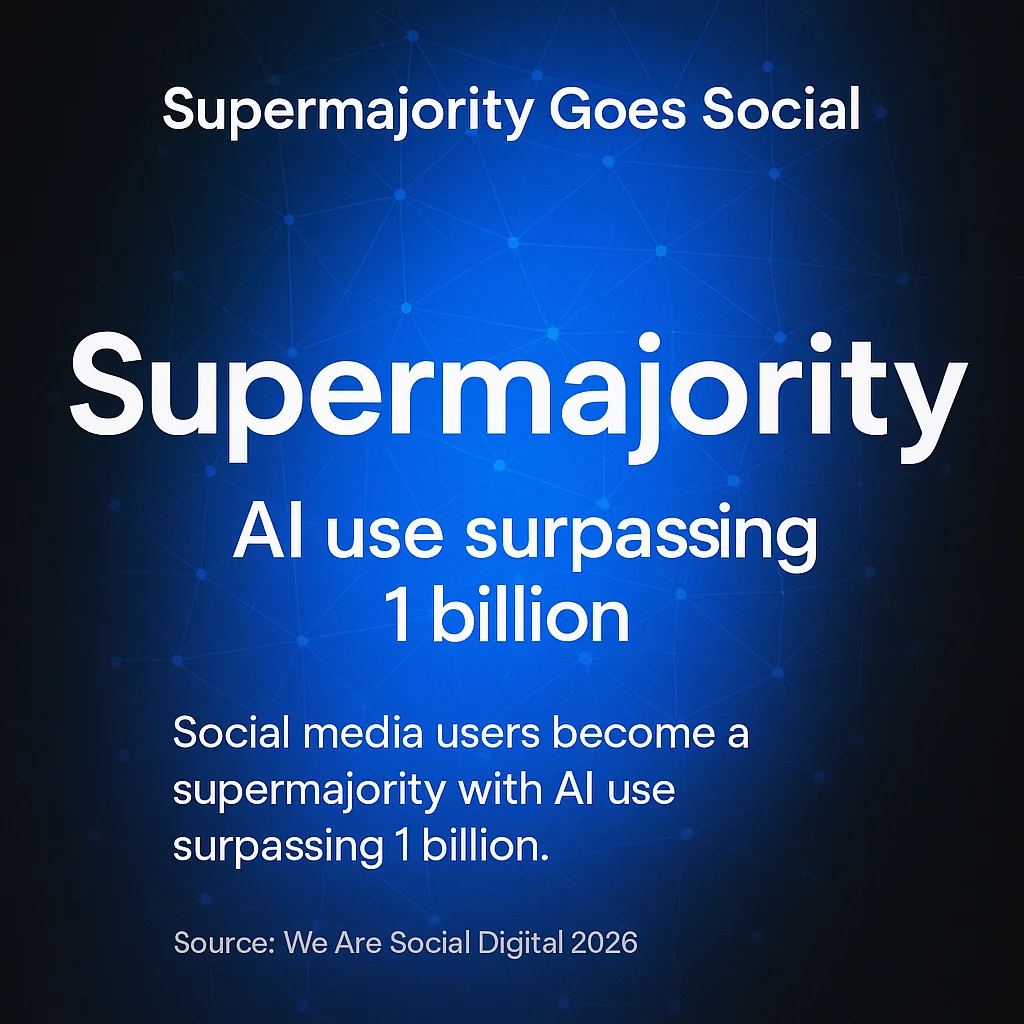
Understanding emerging trends helps you prepare for coming changes rather than reacting after competitors gain advantages.
Advanced personalisation capabilities
Next-generation AI will create truly individualised content experiences. Each follower sees content optimised for their specific interests, engagement history, and preferences.
Predictive personalisation will anticipate audience needs before they articulate them. AI analyses behaviour patterns to surface relevant content proactively.
Real-time content adaptation will modify posts dynamically based on initial engagement signals. Underperforming content adjusts automatically to improve results.
Enhanced video and interactive content
AI video generation tools will enable sophisticated video content creation without extensive production resources. Generate personalised video messages, product demonstrations, or educational content at scale.
Interactive content powered by AI will engage audiences in personalised experiences. Quizzes, assessments, and recommendation engines adapt based on user responses.
Live streaming support will provide real-time assistance during broadcasts. AI suggests topics, answers viewer questions, and optimises stream settings for maximum engagement.
Deeper integration across marketing channels
AI will orchestrate cohesive experiences across social media, email, websites, and advertising. Customer interactions on one channel inform personalisation across all others.
Unified analytics platforms will reveal complete customer journeys. Understand how social media interactions influence later purchases or engagement on different channels.
Cross-channel content optimisation will ensure consistent messaging whilst adapting to each platform’s unique characteristics and audience expectations.
Quick answers to common questions
Can AI do social media marketing?
Yes, AI performs many social media marketing tasks by automating content creation, scheduling posts, analysing audience data, and optimising campaigns. AI tools generate tailored posts, manage multiple platforms, and provide insights to improve engagement and brand consistency.
How much does AI social media marketing cost?
AI social media tools range from free basic plans to enterprise solutions costing hundreds monthly. Most marketers find effective options between £20-100 monthly. Consider tools with free trials to evaluate ROI before committing.
Will AI replace social media managers?
AI handles repetitive tasks but doesn’t replace human creativity, strategy, and relationship building. Social media managers using AI tools become more effective by focusing on strategic decisions whilst AI handles execution details.
Taking action on AI-enhanced engagement
AI transforms social media engagement from time-intensive manual work to strategic audience connection. The tools discussed throughout this guide offer practical capabilities you can implement immediately.
Start with content creation automation using platforms like Jasper or ChatGPT. Generate a month of social posts this week. Experience firsthand how AI accelerates content production whilst you refine outputs to match your brand voice.
Implement intelligent scheduling with Buffer or Hootsuite. Let algorithms identify optimal posting times based on your audience data. Monitor how timing adjustments impact engagement rates over the next month.
Explore the benefits AI brings to social media marketing to deepen your understanding of practical applications. Consider maximising social media engagement with AI-powered assistants for automated content curation strategies.
The competitive advantage goes to marketers who adopt AI thoughtfully rather than perfectly. Begin experimenting today. Learn what works for your specific audience through testing rather than theoretical planning.
Your next steps are clear. Choose one AI tool. Implement it this week. Measure results over 30 days. Then expand to additional capabilities based on proven value.


